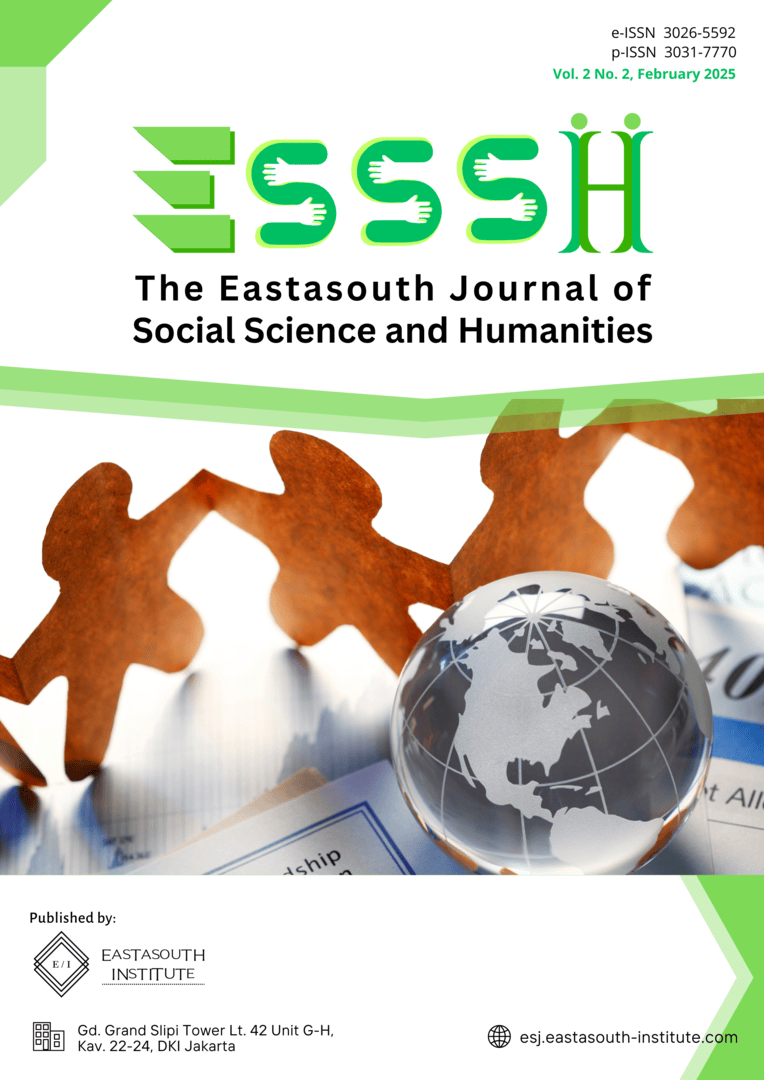Bibliometric Research on Social Interaction in Virtual Worlds
Main Article Content
Abstract
This study presents a bibliometric analysis of research on social interaction in virtual worlds, highlighting key trends, thematic clusters, and global collaborations. By analyzing co-authorship networks, keyword co-occurrences, and publication trends, this research identifies the evolution of scholarly interest in the field. Early studies focused on identity formation, social presence, and psychological aspects of virtual interactions, while recent research has shifted towards artificial intelligence, virtual reality, and human-computer interaction. The findings indicate that virtual social interactions are increasingly shaped by technological advancements, necessitating further examination of their ethical, psychological, and societal implications. The co-authorship analysis reveals strong international collaborations, with the United States, Germany, and Italy playing dominant roles, while emerging research hubs in Asia contribute to the field’s globalization. Future research should address ethical concerns surrounding AI-driven interactions, the effects of immersive technologies on social behavior, cross-cultural variations in virtual communication, and the need for longitudinal studies on digital socialization. This study provides a structured overview of the research landscape, offering insights into emerging trends and future directions in the study of social interactions in virtual worlds.
Article Details

This work is licensed under a Creative Commons Attribution-ShareAlike 4.0 International License.
References
M. Jakobsson, “Virtual worlds and social interaction design.” Informatik, 2006.
R. Schroeder, A. Huxor, and A. Smith, “Activeworlds: geography and social interaction in virtual reality,” Futures, vol. 33, no. 7, pp. 569–587, 2001.
M. Jakobsson, “Why Bill Was Killed–understanding social interaction in virtual worlds,” TWLT 15 Interact. Virtual Worlds, p. 98, 1999.
M. Cantamesse, C. Galimberti, and G. Giacoma, “Interweaving interactions in virtual worlds: A case study,” Annu. Rev. Cybertherapy Telemed. 2011, pp. 189–193, 2011.
R. Schroeder, Being there together: Social interaction in shared virtual environments. Oxford University Press, 2010.
R. Schroeder, “Social interaction in virtual environments: Key issues, common themes, and a framework for research,” in The social life of avatars: Presence and interaction in shared virtual environments, Springer, 2002, pp. 1–18.
V. E. Stone, “Social interaction and social development in virtual environments,” Presence Teleoperators Virtual Environ., vol. 2, no. 2, pp. 153–161, 1993.
M. Jakobsson, “Questing for knowledge—Virtual worlds as dynamic processes of social interaction,” in Avatars at work and play: Collaboration and interaction in shared virtual environments, Springer, 2006, pp. 209–225.
S. Evans, “Virtual selves, real relationships: An exploration of the context and role for social interactions in the emergence of self in virtual environments,” Integr. Psychol. Behav. Sci., vol. 46, pp. 512–528, 2012.
P. R. Messinger et al., “Virtual worlds—past, present, and future: New directions in social computing,” Decis. Support Syst., vol. 47, no. 3, pp. 204–228, 2009.
M. T. Giang, Y. B. Kafai, D. A. Fields, and K. A. Searle, “Social interactions in virtual worlds: Patterns and profiles of tween relationship play,” Comput. games New Media Cult. A Handb. Digit. Games Stud., pp. 543–555, 2012.
Y. Wang, L. Wang, and K. L. Siau, “Human-centered interaction in virtual worlds: A new era of generative artificial intelligence and metaverse,” Int. J. Human–Computer Interact., pp. 1–43, 2024.
W. S. Bainbridge, “The scientific research potential of virtual worlds,” Science (80-. )., vol. 317, no. 5837, pp. 472–476, 2007.
S. Gottschalk, “The presentation of avatars in second life: Self and interaction in social virtual spaces,” Symb. Interact., vol. 33, no. 4, pp. 501–525, 2010.
A. Petrakou, “Interacting through avatars: Virtual worlds as a context for online education,” Comput. Educ., vol. 54, no. 4, pp. 1020–1027, 2010.
A. Kaplan and M. Haenlein, “Siri, Siri, in my hand: Who’s the fairest in the land? On the interpretations, illustrations, and implications of artificial intelligence,” Bus. Horiz., vol. 62, no. 1, pp. 15–25, 2019.
S. C. Srivastava and S. Chandra, “Social presence in virtual world collaboration,” MIS Q., vol. 42, no. 3, pp. 779-A16, 2018.
J. Gaimster, “Reflections on interactions in virtual worlds and their implication for learning art and design,” Art, Des. Commun. High. Educ., vol. 6, no. 3, pp. 187–199, 2008.
R. W. Kerbs, “Social and ethical considerations in virtual worlds,” Electron. Libr., vol. 23, no. 5, pp. 539–546, 2005.
E. Reid, “Virtual worlds: Culture and imagination,” Cybersociety Comput. Commun. community, pp. 164–183, 1995.
D. Horton and R. Richard Wohl, “Mass communication and para-social interaction: Observations on intimacy at a distance,” Psychiatry, vol. 19, no. 3, pp. 215–229, 1956.
T. L. Chartrand and J. A. Bargh, “The chameleon effect: the perception–behavior link and social interaction.,” J. Pers. Soc. Psychol., vol. 76, no. 6, p. 893, 1999.
R. E. Walton and R. B. McKersie, A behavioral theory of labor negotiations: An analysis of a social interaction system. Cornell University Press, 1991.
E. Goffman, “On face-work: An analysis of ritual elements in social interaction,” Psychiatry, vol. 18, no. 3, pp. 213–231, 1955.
L. Wing and J. Gould, “Severe impairments of social interaction and associated abnormalities in children: Epidemiology and classification,” J. Autism Dev. Disord., vol. 9, no. 1, pp. 11–29, 1979.
R. P. Mattick and J. C. Clarke, “Development and validation of measures of social phobia scrutiny fear and social interaction anxiety,” Behav. Res. Ther., vol. 36, no. 4, pp. 455–470, 1998.
J. Berger, B. P. Cohen, and M. Zelditch Jr, “Status characteristics and social interaction,” Am. Sociol. Rev., pp. 241–255, 1972.
H. H. Kelley, “Attribution in social interaction.,” in Preparation of this paper grew out of a workshop on attribution theory held at University of California, Los Angeles, Aug 1969., Lawrence Erlbaum Associates, Inc, 1987.
A. Kendon, “Some functions of gaze-direction in social interaction,” Acta Psychol. (Amst)., vol. 26, pp. 22–63, 1967.
A. V Cicourel, “Cognitive sociology: Language and meaning in social interaction.,” 1974.

